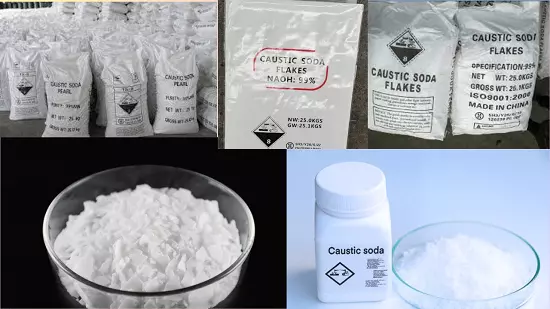In the modern textile industry, numerous chemicals and processes are used to transform raw materials into the fabrics and garments we wear every day. One such chemical that plays a pivotal role in textile production is caustic soda, also known as sodium hydroxide (NaOH). This highly versatile and essential chemical has a wide range of uses in textile manufacturing, contributing to the quality and characteristics of textiles. In this article, we present the Use Of Caustic Soda (NaOH) in the Textile Industry.
What Is Caustic Soda (NaOH)?
Caustic soda is commonly referred to as sodium hydroxide (NaOH), caustic soda is a strong, reactive white solid that is soluble in water. It is heavily utilized in multiple industries, as well as households, due to its powerful ability to break down organic material, like grease.
However, this alkaline compound can be hazardous if not handled correctly. Consequently, it is a vital component in various chemicals like soaps, detergents, and paper, as well as industrial procedures like aluminum production, water treatment, and the making of pulp and paper.

Use Of Caustic Soda In the Textile Industry?
Caustic soda is widely used in the textile industry for a variety of applications, including:
Mercerization: Caustic soda is used to treat cotton yarn or fabric to increase its strength, luster, and affinity for dyes. This process, known as mercerization, involves treating the cotton with a concentrated solution of caustic soda, which causes the fibers to swell and straighten.
Bleaching: Caustic soda is used as a bleaching agent in the textile industry to whiten or lighten fabrics, yarns, or fibers. It is often used in combination with hydrogen peroxide or other bleaching agents to achieve the desired level of whiteness or brightness.
Scouring: Caustic soda is also used to remove impurities and natural oils from textile fibers before they are dyed or processed. This process, known as scouring, involves treating the fibers with a hot solution of caustic soda and other chemicals, which dissolve and remove any residual dirt, wax, or oil.
Finishing: Caustic soda can also be used as a finishing agent for textiles, helping to improve the hand, texture, or appearance of the fabric. It can be used to soften or stiffen fabrics, add shine or luster, or impart other desired properties.
Role Of Caustic Soda In the Textile Industry?
Caustic soda plays a critical role in the textile industry, helping to improve the quality, appearance, and performance of textile products. However, it is important to handle this chemical with care, as it can be hazardous if not used properly.
Caustic Soda (NaOH) Chemical Purity Testing Method in Textile Industry
Purpose
The textile industry is a chemical-based industry. Different types of textile processing steps require different types of chemicals in the process. Therefore chemicals play an important role in the textile industry, especially in the wet processing factory. The major chemical that is widely used in wet processing is Caustic Soda (NaOH).
Reagent:
- Hydrochloric acid (HCl) ……………. 3.75 g + 100 ml water
- Phenolphthalein (C20H14O4) …….. 0.1% solution
- Caustic Soda (NaOH) ………………….… 2.0% solution
- Water …………………………….…………….. 49.0 ml
Procedure
- Caustic soda (1.0 ml) and phenolphthalein – as an indicator (1 drop) are taken in a glass flask.
- Water (49.0 ml) was added to the solution.
- Hydrochloric acid is kept in the burette and the solution until the solution color turns pink.
- Burette reading is taken.
Calculation: Purity%= ( BR x 0.45N x 0.04 x 100) / NaOH Weight
Here, BR Means Burette Reading.
Conclusion
The Use Of Caustic Soda (NaOH) in the Textile wet processing Industry is mandatory. Its applications span from the initial pre-treatment of textiles, where it aids in desizing and scouring, to the critical mercerization process that improves the characteristics of cotton fibers.
